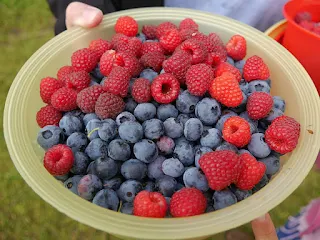Contrary to popular belief, diabetics can consume fruit. Fruit does indeed have natural sugars in it. You may not necessarily have to avoid fruit if you have diabetes, though. Simply put, that implies you should be more selective about the fruit (and quantity) you eat.
Like many other foods, fruit can cause blood sugar to rise. Your A1C, which measures how high your blood sugar is on average, might be increased by frequent blood sugar rises. The less effectively your body is controlling the problem, the higher the A1C level.
But if you have diabetes, fruit doesn't have to be off-limits. Fruit may, in fact, be a beneficial component of a healthy diet.
Just choosing the healthiest fruits for them and eating certain others less frequently is crucial for those with diabetes.
To learn more about the best and worst fruits for diabetics, we chatted with two nutritionists.
Can Diabetic People Eat Fruit?
Even if you have diabetes, all fruits provide health benefits, according to these registered dietitians. They include the fibre, vitamins, and minerals that your body needs.
"If it's greater, that implies food breaks down faster, which might trigger a blood sugar surge more quickly," said these dietitians. However, like with other things, people may digest or respond differently to something. A diabetic individual may be able to eat a banana without experiencing a significant sugar surge, while others may have to avoid them entirely.
Of course, while determining the best diet for managing diabetes and blood sugar, always consult your doctor or a qualified nutritionist.
THE BEST 5 FOODS FOR DIABETIC PATIENTS.
1. Berries.
They are a diabetic superfood, according to the ADA, since they are loaded with fibre and antioxidants. As per the U.S. Department of Agriculture, a cup of fresh blueberries includes 84 calories and 21 grams (g) of carbs (USDA). Try berries in a parfait, alternating layers of fruit with plain nonfat yoghurt, if you can resist the impulse to just pop them into your mouth. It makes a terrific treat or breakfast for those with diabetes.
2. Apricots.
With 3 g for that same set of four, these delicious gems are also a rich source of fibre. Toss some chopped fresh apricots in a salad or add them to hot or cold porridge.
3. Apples.
Perhaps an apple a day keeps the doctor away. If you're on the road, throw one in your backpack or purse. According to the USDA, a medium-sized apple has 95 calories and 25 grams of carbohydrates, making it an excellent fruit option. Enjoy half if you're aiming for less than 15 g of carbs per serve.
Apples are rich in fibre (approximately 4 g per medium fruit, making them a healthy source), and one medium apple has 8.37 mg of vitamin C. Don't peel your apples, though; the Harvard T.H. Chan School of Public Health advises against doing so since the skins are packed with antioxidants and fibre that are good for your heart.
4. Oranges.
5. Pears.
Pears are a good source of fibre, with roughly 5.5 g in one medium pear, according to the USDA, making them a perfect addition to your diabetes meal plan. Furthermore, unlike other fruits, they increase in texture and flavour after being plucked. According to USA Pears, keep your pears at room temperature until they're ripe and ready to eat (they may then be stored in the refrigerator).
Here's a great suggestion: Add a sliced pear to your next spinach salad.






